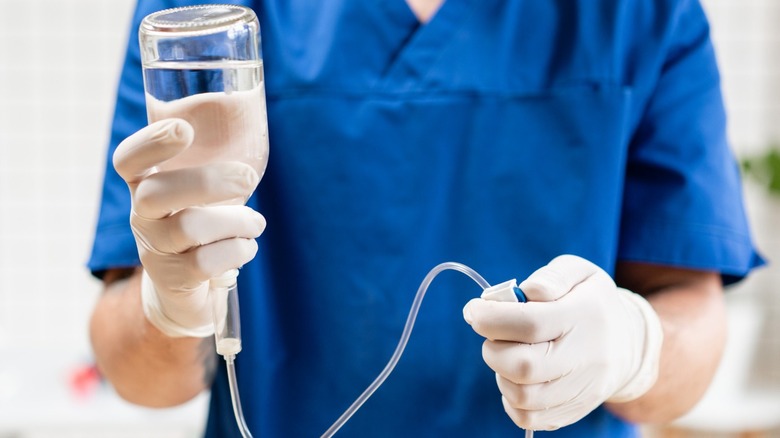An IV Version Of The Antiviral Drug Used To Treat Monkeypox Could Make Treatment Easier
As monkeypox continues to spread across the U.S — the current leader in world cases — there is an urgency to make treatments as accessible as possible.
In its latest strategy to treat monkeypox, the U.S. has purchased roughly $26 million worth of intravenous TPOXX, an antiviral drug, from Siga Technologies, per Reuters. This IV option will help provide treatment to those who are infected but unable to swallow pills due to monkeypox-related sores inside the mouth. Up until recently, TPOXX has historically only been approved in the U.S. as an antiviral for smallpox. However, monkeypox is in the same family as the smallpox virus, so the health sector is turning to smallpox antivirals to treat monkeypox, per the National Institutes of Health (NIH).
While not approved by the U.S. Food and Drug Administration (FDA), the Centers for Disease Control and Prevention (CDC) is providing guidance under a special protocol that permits the use of TPOXX for the treatment of monkeypox under certain conditions. However, according to The New York Times, TPOXX has historically been hard to access, so it remains to be seen whether the IV version will reach those who need it. Meanwhile, government officials are pushing for easier access, per the House Committee On Oversight And Reform.
According to the latest data, there are over 10,000 confirmed cases of monkeypox in the U.S. as of this writing (per the CDC). New York State has the most cases at 2,132 (via the New York State Department of Health).
This is how antiviral drugs work
As the name suggests, antiviral drugs work to fight off harmful viruses and can also help reduce the risk of transmission. Additionally, they help reduce infection and symptoms and shorten the length of an infection. This means they serve as both medications that prevent viruses, as well as treatments for viral infections, per the Cleveland Clinic.
The reason viruses can cause severe illness is because they are microscopic infections that attach to healthy host cells. They then kill those healthy cells before replicating and attaching to other healthy cells. A virus can also infect you while remaining inactive, meaning you may not have any symptoms, but you are still contagious. Depending on the virus and the antiviral medication, the purpose of the antiviral may vary. Some results include blocking receptors so viruses are unable to attach to other healthy cells, boosting your immune system to prevent infection, and reducing the amount of virus (or viral load), per the Cleveland Clinic.
If you are an adult and have been prescribed the antiviral TPOXX in the pill form for monkeypox, expect to take a 600-milligram dose twice a day for 14 days. Both doses need to be taken within 30 minutes of a full meal. Potential side effects can include headache, nausea, and vomiting, among others, per Siga Technologies.


